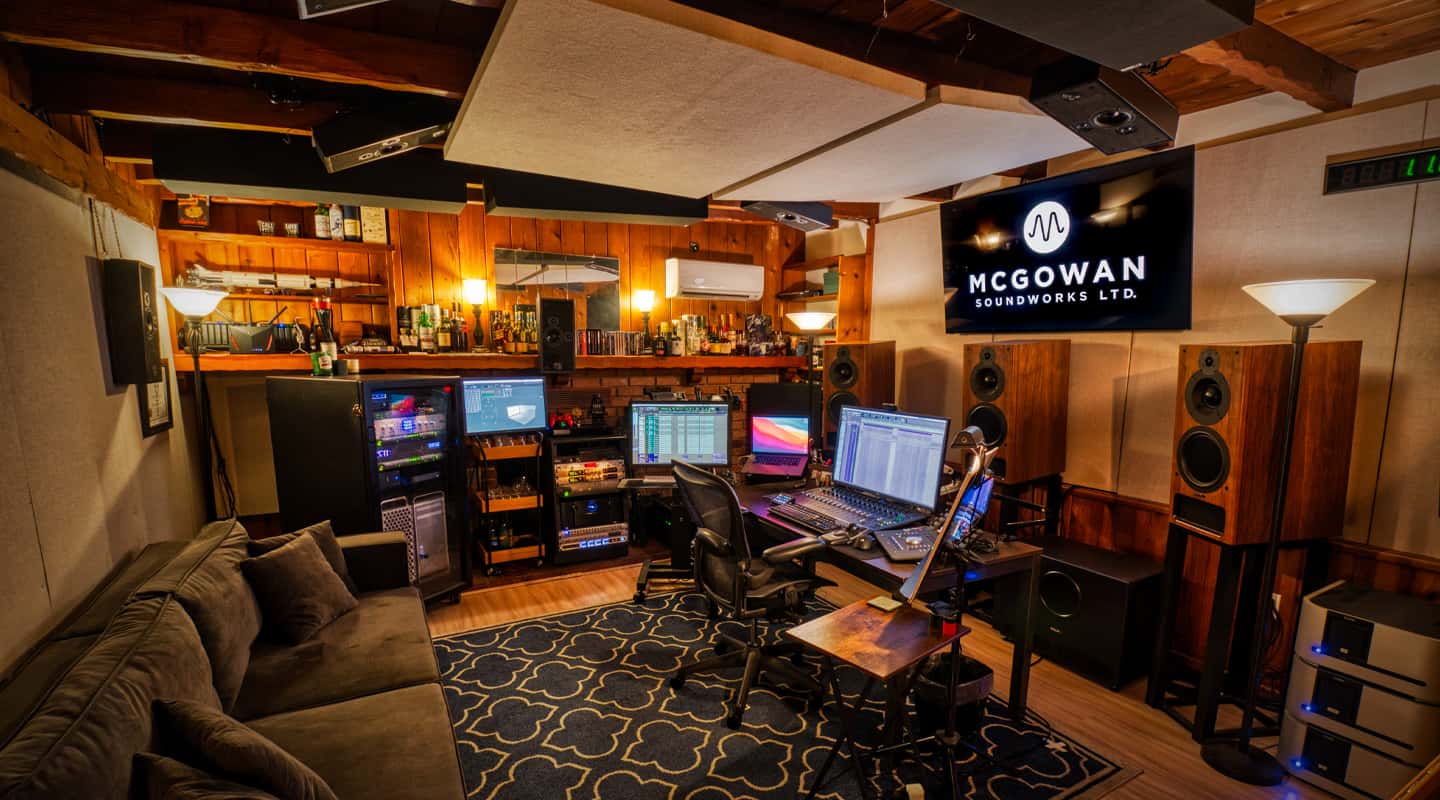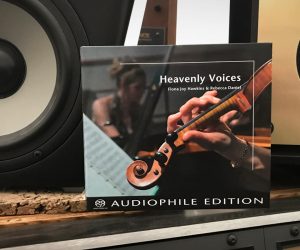
Phil McGowan: Kick Ass Score Mixer
Phil McGowan is up for an Emmy for his score mixing work on Cobra Kai and TINA.
‘Cobra Kai’ is a guilty pleasure. Once I knew I was interviewing gun film score mixer Phil McGowan I wanted to ensure I was prepared. Who knew that blasting through three seasons of the ‘Karate Kid’-inspired Netflix phenom would be so much fun — irreverent, chaotic, bad-ass TV with a big sound track packing plenty of nods to the ’80s with gritty synths and spandex-clad guitar riffs.
Thanks to his work on ‘Cobra Kai’, Phil is up for an Emmy (Outstanding Sound Mixing For A Comedy or Drama Series And Animation). He’s got another iron in the fire with his mixing on the HBO doco ‘TINA’ (Outstanding Sound Mixing For A Nonfiction Or Reality Program).
TURN UP: TV SOUND
As home cinema systems become more sophisticated, so has the sound mixing for TV. Not so long ago, most TV sound was produced by a small piece of flapping cardboard in a CRT. Now soundbars and subs are mimicking full blown cinema sound, and providing an experience worthy of the 4K big-ass TV everyone now has.
Phil McGowan has ridden the wave of the golden age of television. He moved to LA in 2009 after graduating from Berklee College Music School, apprenticing himself to big-time composer, Trevor Morris.
After some years learning the ropes and witnessing the very best come through Trevor’s scoring stage, he went freelance. Now, from his Atmos mix studio in the backyard of his LA home, he’s become a go-to mixer for TV, film and video games.
BAD ASS COBRA CUES
To highlight the growing ambitions of TV soundtracks, ‘Cobra Kai’s music combines full orchestral cues with throwback rock elements and even choir parts.
“Some of those fight scenes would have guitars, drums, full orchestra… everybody all at the same time just blasting away,” explains Phil. “It’s a big, big sound, which is really fun to mix. It’s a challenge to get it all to work but when you get all those elements sounding good it’s very satisfying.”


PHIL-HARMONIC
Although soundtracks have changed and developed over decades the syntax remains stubbornly the same: when it comes to providing impact and gravitas, bigger is always better.
That said, not every project has a Hans Zimmer budget. ‘Cobra Kai’ began life as a comparatively low budget YouTube production before migrating to Netflix.
“Everyone who’s after a big orchestral score wants the biggest sound possible. The trouble is, hiring a big orchestra in London and paying for a big scoring stage like Air or Abbey Rd is a huge outlay — might be 100 grand for the day!”
Instead, the bean counters will look at eastern European alternatives: “Bratislava and Prague are the two main ones.”
Nothing might beat the London Symphony in the Air Studios scoring stage but the eastern Europe alternative can be excellent. “The Bratislava orchestra uses the Vienna Synchron Stage, which is a beautiful recording stage.”
In the case of ‘Cobra Kai’, the producers employed the Prague Symphony Orchestra. The sessions would be recorded using standard scoring stage microphone techniques, employing a Decca Tree and outriggers, supplemented by spot microphones on instrument sections for greater balance control.
The sound supervisor and composer would Skype into the sessions to observe proceedings at some ungodly time of night.
Meanwhile, the live rock ’n’ roll elements are recorded by musicians in LA studios.
“I’ll get those elements and then Prague will send me download links for all the orchestra parts,” explains Phil. “When I embark on a new episode, I’ll usually spend an hour or two in the morning just putting everything in the right place before I even start doing any actual mixing.
“The elements are now familiar. The orchestral parts, the synths, the drums… I’ve got settings and plug-ins ready to roll. Having those ‘templates’, as it were, make it easier to get through the minutes required in the tight time frame.”

GO HUGE
Phil McGowan is in demand because he knows how to make music scores sound huge. How? Predominantly it’s all about the best use of EQ and reverb.
“Just the right amount,” agrees Phil. “I’ll select a longer hall convolution reverb in Altiverb — something like the Todd AO scoring stage… may it rest in peace — to give the score more space.
“As far as EQ goes, I’ll clear up the mid-range. If one frequency is really howling then it makes thing sound smaller because your ear is focussing on a narrower band of frequencies. Once the mid-range is cleaned up and you have a broadband balance, you find that you can turn the orchestra right up.
“Panning the room mics wide is important. I’ll rely a bit more on the room mics than the close mics, to improve the perception of size and space.
“If the powers that be still aren’t satisfied with the size and power of the mix I’ll usually blend in orchestral samples on top. Usually the samples have been recorded at Sony Studios in LA or Abbey Rd or Air in London. That sort of combination really lends itself to a large size.”
THROWBACK PUNCH
With his go-to effects, EQ and compression on tap, Phil reliably and speedily pulls great-sounding ‘Cobra Kai’ score mixes for the dub stage. But occasionally the sound supervisor throws him a curve ball.
“One episode in Season 2 was drawing more on the old ’80s movie footage for flashbacks,” recalls Phil. “So the idea was for the music to have a more authentic ’80s vibe, and sound more like the old Bill Conti ‘Karate Kid’ score.
“I actually found the Paramount sound stage as a convolution reverb in Altiverb — the studio where they recorded the original ‘Karate Kid’ score. I really laid it on thick and it was fun to mix with.
“To give it an ’80s sound I tried not to clean up the orchestra as much. I left it a little bit more midrange-y, a little more vintage-sounding as opposed to the modern smiley-face EQ curve.
“After that experiment the instructions came through: let’s go back to making it huge, clean, clear, and epic.”
let’s go back to making it huge, clean, clear, and epic


























A HUGE congratulations to my brother and friend Phil!!. I’m almost in tears. I’m very proud to have been involved with his career from the get go. He can tell you about learning the basics years ago. The is certainly a case of the student going far beyond the teacher!. God bless Phil and continued great work in the future!
Nice tribute Ron. Thanks for your input, especially from someone with your credentials.